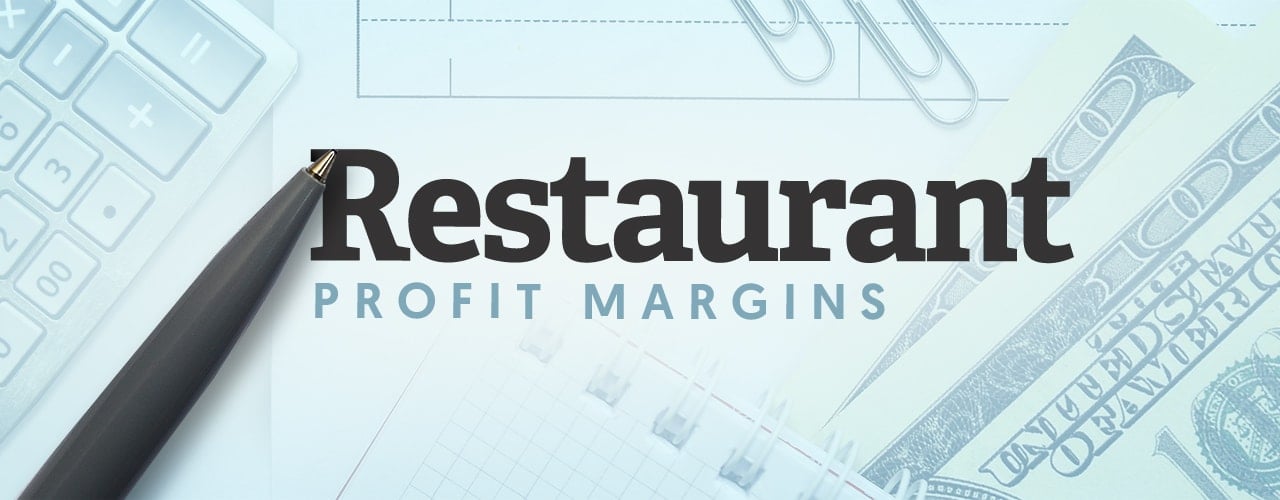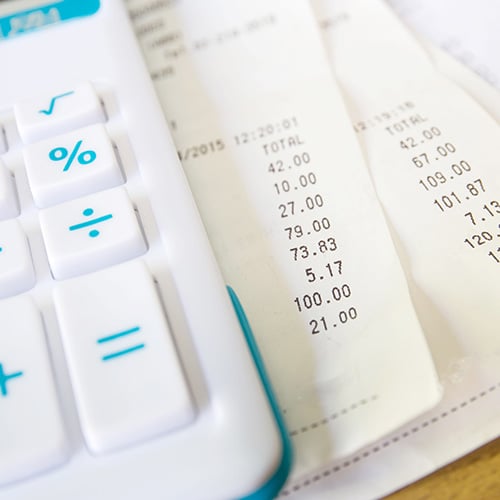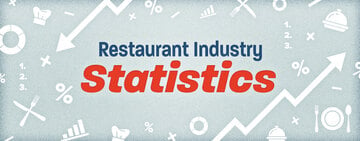
Restaurant Profit Margin
Last updated on 2/25/2021A restaurant’s profit margin is a standard measure of the business’s profitability, or the potential to make a profit. Terms like profit margin might seem like complex financial jargon, but the principle behind a restaurant’s profit margin is actually quite simple. No matter if you're opening a new restaurant or if you've been in business for years, understanding your profit margin potential is one of the keys to success in the industry. We’ll explain the basics of restaurant profit margins so you can apply the knowledge in your everyday operations.
Profit Margin Calculator
If you already know your restaurant's total revenue and total expenses, you can use our profit margin calculator to find out your net profit margin percentage:
What Is Profit Margin?

Restaurant profit margin is the percentage of each dollar of sales that counts towards your profits. Every time a sale is made, the cost of expenses must be taken out of the sale. The amount of money left over after all expenses are accounted for is profit. Profit margin is simply a method to express this in a percentage.
How to Calculate Profit Margin
You need two figures to calculate your profit margin for restaurants: total revenue and total expenses. Total revenue is the amount of sales you’ve made from selling goods or services. Total expenses include the cost of goods sold (COGS) plus all the other costs of running your business, like operating cost, payroll, and taxes. These figures are easy to find on your restaurant profit and loss statement. With the figures in hand, subtract total expenses from total revenue to determine net profit. Next, divide net profit by total revenue and multiply the figure by 100 to get a percentage.
If you own a lemonade stand and sell one cup of lemonade for $1.00 and your expenses for each cup are $0.60, you have made a profit of $0.40. Your profit margin percentage is 40%.
$1.00 Total Revenue - $0.60 Total Expenses = $0.40 Profit
$0.40 Profit ÷ $1.00 Total Revenue = 0.40
0.40 x 100 = 40% Profit Margin
It’s easy to see profit margin at work when looking at a $1.00 sale, but what about bigger numbers? We’ll explain how to calculate profit margins in more depth below.
Profit Margin Formula
Calculate the profit margin for your business using the net profit margin equation below:
Total Revenue - Total Expenses = Net Profit
(Net Profit ÷ Total Revenue) x 100 = Net Profit Margin
Here is an example of the profit margin formula at work if total revenue is $150,000 and total expenses are $138,000:
Total Revenue = $150,000
Total Expenses - $138,000
$150,000 - $138,000 = $12,000 Net Profit
($12,000 ÷ $150,000) x 100 = 8
Profit Margin = 8%
It would be wonderful if restaurants could keep the total revenue they make, but business finances don't work that way. That's why it's important to plan your menu pricing carefully, so your incoming revenue is always more than your total expenses. If it's not, you will lose money instead of making a profit. Don't forget that your menu prices have to cover all of your expenses, not just food cost.
How To Improve Restaurant Profit Margin

There are three ways to improve your restaurant profit margin: increase total revenue, decrease total expenses, or a combination of both.
- Increase Total Revenue - Increasing sales alone will not improve your profit margin. You need to widen the gap between total revenue and total expenses by increasing your sales and keeping expenses the same. This is the most difficult strategy to achieve because as your sales revenue increases, your expenses will likely grow as well.
- Decrease Expenses - Decreasing your expenses while keeping sales revenue steady is a better way to improve your profit margin. To achieve this, focus on lowering controllable expenses like cost of goods sold (COGS), labor costs, and direct operating expenses (DOE).
- Increase Revenue and Decrease Expenses - Increasing your sales revenue while lowering total expenses is the fastest way to improve your profit margin.
How To Lower Expenses
Some of your restaurant expenses are fixed, like rent and insurance, but many of your expenses can be controlled. To lower your total expenses and increase your net profit margin percentage, examine your costs in these three areas:
- Cost of Goods Sold - The cost of goods sold (COGS) is the direct cost to you for every item you sell. If you run a donut shop, the COGS will include the cost of all the sugar, eggs, and other ingredients you need to make the donuts. To lower your food cost, keep track of your inventory, find cost-effective food suppliers, and implement portion control.
- Labor Cost - Labor cost includes the wages and salaries of all your paid employees. To lower your labor cost , try reducing your employee turnover rate. The cost of training new staff members can be avoided if you use successful employee retention strategies.
- Direct Operating Expenses - Direct operating expense (DOE) covers all the items you need to run your business on a daily basis, excluding food cost. Cleaning supplies, paper goods, and disposables all fall under direct operating expenses. The cost for these types of items can add up, so it's important to keep track of your expenditures. Working with a wholesale supplier that offers quantity pricing, membership programs, and free shipping can help to lower your direct operating costs.
Restaurant Profit Margin FAQs
Learn the answers to common restaurant profit margin questions below:
What Is the Average Profit Margin for Restaurants?
The average net profit margin for restaurants is reported to range from 2% to 6%. However, each type of restaurant has its own average profit margin, so it's possible that a business may have a higher or lower percentage than the reported average. Full-service restaurants operate at the lower end of the average, while quick-service restaurants operate at the higher end. These foodservice businesses have the potential to operate with a higher profit margin than the average full-service restaurant:
- Fast Food Restaurants - The average profit margin for fast food restaurants is 6% to 9% because of lower food cost and labor cost.
- Food Trucks - The average profit margin for food trucks is 6% to 9% due to low overhead costs like rent and utilities.
- Catering Businesses - The average profit margin for caterers is 7% to 8% because, just like food trucks, catering businesses have lower overhead costs.
What Is a Good Profit Margin?
The higher the profit margin, the greater your profit will be and the more quickly it adds up. Because restaurants operate at a lower profit margin than most other businesses, a good profit margin in foodservice could fall in the 5% to 15% range.
What Is Net Profit Margin?
Net profit margin is the percentage of profit vs. total sales after all expenses have been accounted for, including the cost of goods sold, labor cost, and operating expenses.
What Is Gross Profit Margin?
Gross profit margin is the percentage of profit vs. total sales after the cost of goods sold has been accounted for. The gross profit margin percentage doesn't account for other expenses, like labor cost or operating expenses.
Profit margin is a basic financial concept that helps business owners to gauge the profitability of their restaurant. No matter how many customers are served, if the net profit margin percentage is too low, the amount of profit from each sale will be negligible. Improving the net profit margin helps your restaurant to make more money off each sale and increase your overall profit.






